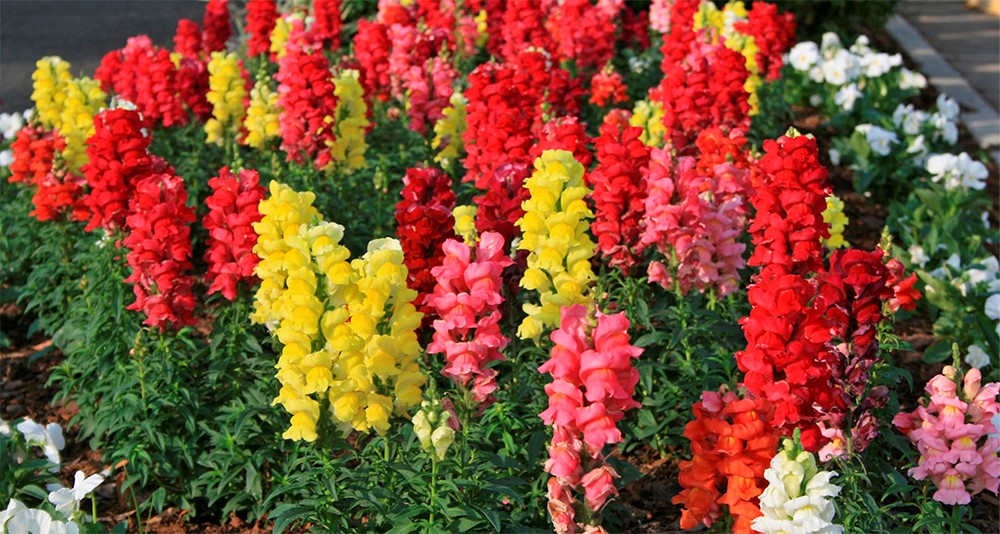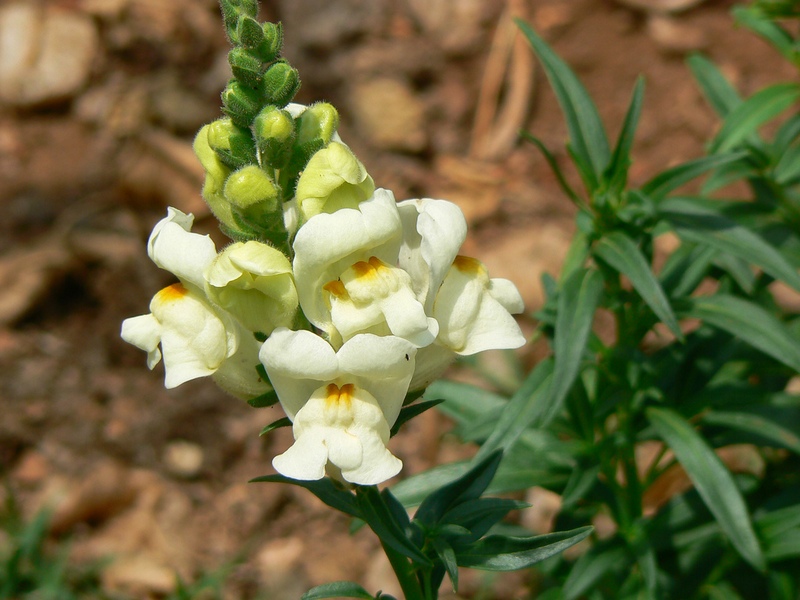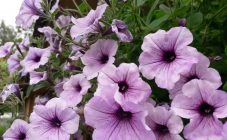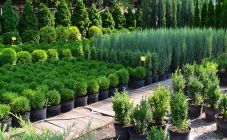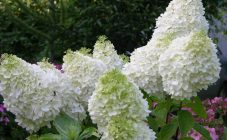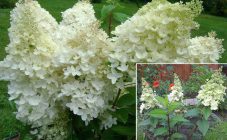Content:
Antirrinum is a plant known to every summer resident. True, this beautiful flower is known more under the name "snapdragon" - a perennial, which is often planted as an annual crop. It is grown not only in garden plots, but also on balconies and loggias.
Description of culture
Snapdragon (Latin Antirrhinum) belongs to the Plantain family and is a perennial herb with large green stems and flowers of various colors. In the climate of the middle zone, it is cultivated as an annual, because it is not able to overwinter.
Snapdragons form many stems, they are straight, sometimes branching. Their height depends on the variety. Leaves are lanceolate or oval in shape, slightly pubescent, colored green.
Snapdragon is native to the Mediterranean, where it is found in the wild. Not so long ago it appeared in Russia and immediately gained popularity. It grows now also in Asia and North America, you can find it in Western Siberia. It is a decoration of any site, with its aroma attracts bees, bumblebees and various butterflies. In nature, it is a wildflower.
The healing properties of snapdragon
In addition to decorative properties, snapdragon also has healing properties. It is used in traditional medicine. Infusion of flowers is good for bloating intestines, in complex therapy for liver diseases, as well as for migraines, dropsy, shortness of breath, sore throat. During the recovery period, in the treatment of hepatitis, it is recommended to use an infusion of a mixture of snapdragon flowers, immortelle flowers and corn silk. When applied externally, the flower will help with hemorrhoids, boils and open wounds and ulcers on the skin.
In the Eastern countries, snapdragon decoction was used as an antidote, and when lily oil was added to it, a cosmetic product was obtained. They used it to lubricate the face, because it was believed that such a tool adds attractiveness.
From snapdragon, an effective decoction is obtained for gargling with sore throat. Prepare it as follows: 5 g of dry plant flowers are poured with 1 tbsp. hot water and another 15 min. boil.
Snapdragon varieties
Snapdragon varieties are classified most often by height. There are 4 groups:
- high - over 70 cm long;
- medium-sized - 40-60 cm;
- low - 25-40 cm;
- dwarf - 15-20 cm.
The tall varieties can reach 110 cm in length. These are such new hybrid varieties as F1 Red XL, F1 Pink XL, with narrow pyramidal bushes and bright flowers, or F1 Rocket Lemon and F1 Rocket Orchid in lemon and lilac tones. Old, time-tested varieties are also relevant today:
- Alaska - greenish-white flowers;
- Canary - bright yellow flowers, reminiscent of the famous bird in color;
- Anna German - delicate light pink flowers;
- Ruby;
- Pink.
This group also includes the terry variety of Madame Butterfly. The high grades are used for cutting or as accents in flower groups. Snapdragon stays in the water for about a week, while all the buds open.
In the period from 2004 to 2007 in the RSAU — Moscow Agricultural Academy named after K.A. Timiryazeva, tall hybrids Arthur with large cherry flowers, Goshenka with orange flowers and a two-color variety Makhaon with spectacular raspberry and yellow flowers were obtained.
Medium-sized antirrinums are characterized by the fact that the main shoot is higher than others of the second order. Presented by such varieties as:
- Golden Monarch with yellow flowers;
- Scarlet Monarch with red and burgundy flowers;
- White Monarch in white;
- Lipstick Silver pink and white;
- Rubi - hot pink
- Tequila Sunrise has original, strongly open bicolor flowers;
- Bizari is a hybrid with yellow flowers, on the background of which various strokes and specks are applied;
- Tag und Nacht is a white and red variety of German breeders that does not fade in the sun.
The group of low and dwarf antirrinums includes hybrids: Floral Showers, Chimes, Magic Carpet, Kimozi, Hobbit, Tom Thumb, Tip-Top. Low-growing flowers look like varieties of medium height, and dwarf ones have a short and slightly flattened inflorescence and are distinguished by abundant flowering. Terry Twinny deserves special attention, which forms very beautiful inflorescences and does not stop flowering until frost.
Reproduction, planting and plant care
Snapdragon can be propagated by seed and cuttings. The second method is rarely used and mainly for varietal breeding of terry species. Growing from seeds is much more common.
Snapdragon blooms from June to late autumn. One flower in an open state lasts up to 12 days. After that, the fruit is formed, which is a polyseminated box. The seeds are small, capable of germinating within 4 years. The plant can overwinter only in warm climates.
Collecting seeds from a plant you like and growing the same will not work, since varietal characteristics will be lost. Therefore, for reproduction, they should be bought in specialized stores.
Seedlings are planted for seedlings in March-April, and they should only be sprinkled with earth a little. Seedlings will appear in about 10 days. It happens that germination is delayed for 3-4 weeks. To speed up the process, the containers are covered with film or glass, and when plants appear, they are immediately removed. The air temperature should be within 18 ° C. If for some reason the seedlings of the snapdragon did not have time to bloom, you can transplant the plant into a pot and bring it home.
A transplant to a permanent place is carried out in the presence of 2-3 true leaves.
When the plant has approximately 6 pairs of leaves, the top of the stem can be pinched to create a dense bush.
After planting seedlings, it can already partially bloom. This is done in late May - early June. Frosts should pass and warm weather should settle both during the day and at night. The distance between the flowers should be 30 cm. It is better to plant the snapdragon in sunny places, then the flowering will be abundant, and the inflorescences themselves are bright, saturated in color. If there is no choice, then you can place the plant in partial shade, but then it will not look so impressive.
Watering is carried out only after the topsoil has dried. After it is recommended to mulch with grass or sawdust. With a large amount of moisture, snapdragons undergo various types of rot.Top dressing with mineral compounds is carried out 3 weeks after transplanting into open ground. The next one must be repeated during the flowering period.
Diseases and pests
Snapdragon can be affected by:
- black leg;
- septoria;
- gray rot.
On a diseased plant, the leaves are covered with red spots. Such plantings must be removed immediately, and the soil after them must be treated with a fungicide that fights against fungi.
Insects affecting snapdragons:
- caterpillars;
- fly larvae;
- scabbards;
- butterflies.
To prevent damage to the flower by diseases and pests, it is worth following a number of simple rules:
- maintain a distance between the bushes of at least 30 cm;
- moderate watering;
- water should not fall on leaves and flowers, only under the root;
- sick and pest-affected plants must be burned immediately.
If you follow these recommendations, the plants will be healthy, bloom almost until winter and you will not have to treat them with chemicals.
Snapdragon is a bright decoration of both summer cottages and city parks. Its many varieties and varieties will allow you to use this flower in any style of landscape design.
